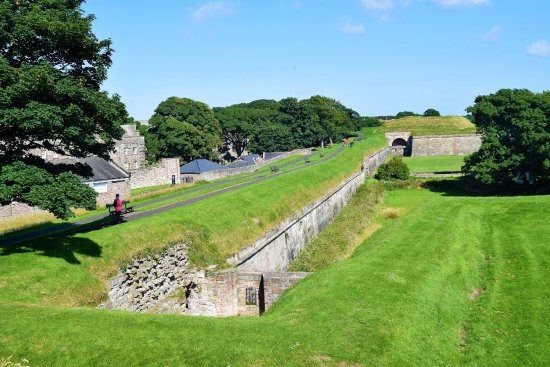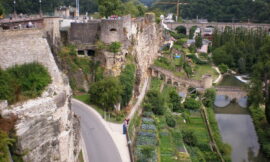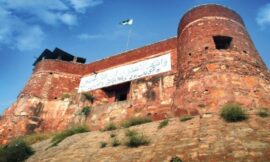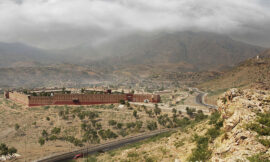Berwick-upon-Tweed Castle and Ramparts are a significant part of the historic town of Berwick-upon-Tweed, located in Northumberland, England. This site is rich with history, showcasing the strategic importance of Berwick as a border town between England and Scotland. The castle and its extensive fortifications have witnessed numerous conflicts and changes in control, making it a fascinating study of medieval and early modern military architecture.
Historical Background
Early History:
- Origins: The origins of Berwick-upon-Tweed Castle date back to the 12th century when it was first constructed by the Scots. It was built on a naturally defensible site overlooking the River Tweed to protect the town from English incursions.
- Anglo-Scottish Wars: Throughout the 13th and 14th centuries, Berwick changed hands between the English and Scots numerous times, reflecting its strategic importance. Each side made various modifications to the castle to enhance its defensive capabilities.
English Control:
- Edward I: In 1296, Edward I of England captured Berwick, leading to significant fortification efforts. He commissioned the construction of substantial stone walls around the town, reinforcing its defenses against Scottish attacks.
- Development: Over the subsequent centuries, the castle and ramparts were continuously developed to keep pace with advancements in military technology, including the adaptation for cannon fire during the 16th century.
The Castle
Structure and Features:
- Gatehouse: The main entrance to Berwick Castle was through a formidable gatehouse, equipped with portcullises and murder holes to defend against attackers.
- Keep: The central keep served as the last line of defense and the residence of the lord. It was a massive stone structure designed to withstand prolonged sieges.
- Curtain Walls: Thick curtain walls surrounded the castle, interspersed with towers for archers and artillery placements.
Decline and Demolition:
- Railway Construction: By the 19th century, the castle had fallen into disrepair. In 1847, much of the remaining structure was demolished to make way for the construction of Berwick-upon-Tweed railway station, part of the East Coast Main Line.
- Preservation: Today, only fragments of the original castle remain, including parts of the curtain wall and the White Wall.
The Ramparts
Elizabethan Fortifications:
- Construction: In the late 16th century, during the reign of Elizabeth I, extensive new ramparts were built around Berwick-upon-Tweed. These fortifications are among the finest examples of Elizabethan military architecture in Britain.
- Bastions: The ramparts feature angular bastions designed to provide overlapping fields of fire, making it difficult for attackers to approach without being exposed to defensive fire from multiple angles.
- Ditches and Earthworks: Deep ditches and earthworks further enhanced the defensive capabilities of the ramparts, preventing siege engines and undermining efforts.
Function and Use:
- Military Garrison: The ramparts served as the primary defensive structure for the town, housing a garrison of soldiers responsible for manning the fortifications and repelling attacks.
- Civilians: The fortifications also provided protection for the town’s civilian population during periods of conflict.
Modern Significance
Historical Preservation:
- Conservation: Efforts have been made to preserve the remaining sections of Berwick-upon-Tweed Castle and the Elizabethan ramparts. These structures are protected as scheduled monuments, ensuring their historical value is recognized and maintained.
- Public Access: The ramparts and surviving castle remains are accessible to the public, offering a glimpse into the town’s turbulent history and strategic importance. Interpretive signage and guided tours provide educational opportunities for visitors.
Cultural Impact:
- Tourism: Berwick-upon-Tweed’s castle and ramparts attract numerous tourists each year, drawn by the town’s rich history and well-preserved fortifications. The site provides a dramatic backdrop for exploring the region’s heritage.
- Community Identity: The castle and ramparts are an integral part of Berwick-upon-Tweed’s identity, symbolizing the town’s resilience and strategic importance through centuries of conflict.
Conclusion
Berwick-upon-Tweed Castle and Ramparts stand as enduring symbols of the town’s strategic significance and turbulent history. From its origins as a Scottish fortress to its transformation into a formidable English stronghold, the site encapsulates the military and political struggles that have shaped the Anglo-Scottish borderlands. The Elizabethan ramparts, in particular, represent a pinnacle of military engineering from the period. Today, the remains of the castle and the well-preserved ramparts offer valuable insights into medieval and early modern fortification techniques, attracting visitors and historians alike. The ongoing preservation efforts ensure that this historical treasure continues to be an educational and cultural asset for future generations.



